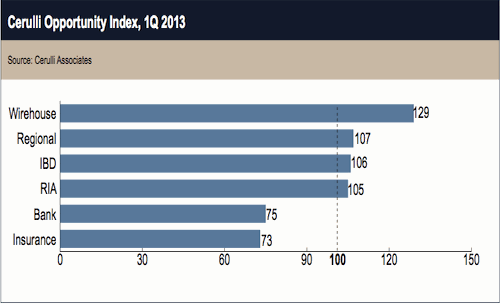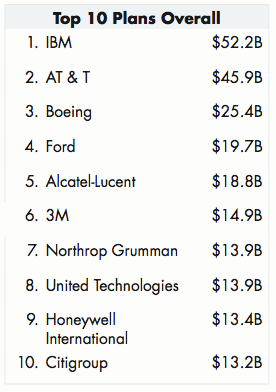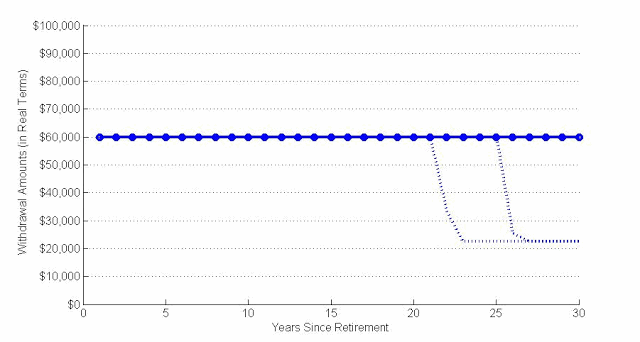
With an orange Volkswagen bus, a film crew and a poster inviting people to “Be part of the movie,” Chad Parks took off on a six-week journey last year to interview ordinary Americans about retirement. He cruised the Las Vegas Strip, hung out in Boulder’s pedestrian mall and waylaid passersby in a New Orleans park. He heard many versions of a single story: typical Americans aren’t ready for retirement.
Parks’ videotaped interviews are the substance of “Broken Eggs” (www.brokeneggsfilm.com), a new documentary that explores what he calls “the looming retirement crisis.”
The film, as the video clips posted on the website demonstrate, will introduce viewers to the flesh-and-blood people behind the familiar dry statistics: that nearly half of American workers have saved less than $10,000 for retirement and fewer than 30% have saved e ven $1,000, at a time when pensions are disappearing, Social Security’s trust fund is shrinking and 401(k) plans are proving susceptible to volatility.
ven $1,000, at a time when pensions are disappearing, Social Security’s trust fund is shrinking and 401(k) plans are proving susceptible to volatility.
“This fatal combination of outsourcing our futures to the government, corporations abandoning their pensions, and people not taking personal responsibility and saving enough will hit us hard,” he told RIJ recently. “The term ‘a perfect storm’ has been overused, but that’s what it is. No one is taking a top down look and tying all these trends together so we can have a clear picture of the reality of the way people retire.”
Broken Eggs is intended to add detail to that picture. The documentary, which he produced, aims to delve deeply into the retirement problem and spark some ideas for solutions. The film records the struggles of Baby Boomers, Gen-Xers and Millennials as they cope with the chore of saving for retirement. By the end of this summer, Parks hopes to begin distributing the film, perhaps through Netflix, Hulu, PBS or one of the cable channels. He also plans to distribute copies to financial companies as well as to universities and schools for use as an educational tool.
“For me, a good documentary makes me change my behavior,” said Parks. “I hope that people who watch will really stop and think, yeah, I got to do something.”
Wobbly three-legged stool
“Broken Eggs” was conceived as a marketing campaign for Parks’ own company, The Online 401(k), a San Francisco-based company that specialized in web-based 401(k) plans for small businesses. Parks and his marketing director, Sylvia Flores, envisioned a promotional film. But as they researched their topic, they gradually realized the immense scope of it.
Parks now describes the film as a non-profit “artistic” project, independent of his company (the company contributed $400,000 to the production). To provide the filmmaking experience he lacked, he brought in former CNN producer Emily Probst Miller. Miller signed on, she said, because CNN had never addressed the topic, although she considers it “one of the biggest social issues of our time.”
 The story is about the insecurity and fear that many Americans feel about retirement. If Social Security, private pension plans and 401Ks each represent a leg of the theoretical “three-legged stool,” there’s a widespread sense that the stool is tottering.
The story is about the insecurity and fear that many Americans feel about retirement. If Social Security, private pension plans and 401Ks each represent a leg of the theoretical “three-legged stool,” there’s a widespread sense that the stool is tottering.
“Every age group now has a different expectation of what retirement means,” said Parks. “People in their 60s and 70s generally have the three-legged stool. People in their 50s and 40s maybe have two out of the three legs, maybe Social Security and personal savings. People in their 30s and 20s and even younger may have nothing but their personal savings to count on. They don’t even know where to begin.”
The retirement dilemma is often described in terms of averages—average savings, average performance, average household debt load and so forth. But, except for that fact that most of the people who appear in Broken Eggs seem to come from the western half of the U.S., there’s not much about them that’s average. Every story is unique.
Meet Rusty, Terry and Shannon
In the film, for instance, you’ll meet Rusty (above right), a 50-something bearded motorcyclist who has managed a small motel in Colorado since a disability sidelined his career in construction work. He never believed his mother’s advice about saving for a rainy day, and seems to take each day as it comes. But you’ll also meet Terry (below, right) an engineer in his 70s, who despite the fact that he prudently saved 10% of his income and earned a small pension from an aircraft manufacturer , finds himself still working because he lost over a million dollars betting on Nevada real estate.
, finds himself still working because he lost over a million dollars betting on Nevada real estate.
Among the women interviewed in the film, there’s Shannon (above, left), a practical-minded Canadian who works for the Canadian government there but who worries that the conservative administration, which has already raised the full retirement age to 67, might reduce her pension further. Her situation was nothing like that of Jeanne (left) a 41-year-old cellist in a professional orchestra with a three-year-old child, whose lawyer husband recently jolted her confidence in the future by asking for a divorce.
For comic relief, two struggling young stand-up comedians are interviewed on a sidewalk in Austin, Texas. They joke with occasional profanity—this footage is semi-raw—but offer a few serious insights that people seldom share, such as the disillusionment one of them felt when he lost his job and half of his 401(k) account balance at the same time, because the employer’s matching contribution wasn’t vested yet at the time of termination.
Still no answers
Americans have begun to adapt to the new reality, Parks has found. Families have compensated for tight budgets by living in multi-generational households that include grandparents, parents, children and extended family, all under one roof. But the future, as always, holds lots of unknowns. Will Boomers throttle back their consumption when they realize that their savings may have to last for 30 years or more? How will that affect the economy? And will today’s workers,  many of whom struggle with student loan debt, even be able to contribute to a 401(k)? Some wonder if a 401(k) is even the proper vehicle for one’s life savings.
many of whom struggle with student loan debt, even be able to contribute to a 401(k)? Some wonder if a 401(k) is even the proper vehicle for one’s life savings.
There are no easy answers to most of the questions posed in “Broken Eggs.” Parks himself favors a hybridized 401(k) system in which the government requires each individual and employer to contribute automatically to an individual retirement fund. Australia has such a system and Senator Tom Harkin of Iowa has proposed a similar plan, he said.
“The looming retirement crisis will affect all of us, but it is avoidable,” writes Parks on the “Broken Eggs” website. “We need to redefine what retirement means, we need to think about our family structures, and we need to be willing to make short-term sacrifices for the greater good. We all need to save in order to literally save ourselves.”
© 2013 RIJ Publishing LLC. All rights reserved.




 Also known as “hybrid” plans, cash balance plans combine features of defined benefit plans, such as high contribution limits, with features of defined contribution plans, such as investment flexibility and portability. Cash balance plans now make up 20% of all defined benefit plans, up from 2.9% in 2001.
Also known as “hybrid” plans, cash balance plans combine features of defined benefit plans, such as high contribution limits, with features of defined contribution plans, such as investment flexibility and portability. Cash balance plans now make up 20% of all defined benefit plans, up from 2.9% in 2001.

 The story is about the insecurity and fear that many Americans feel about retirement. If Social Security, private pension plans and 401Ks each represent a leg of the theoretical “three-legged stool,” there’s a widespread sense that the stool is tottering.
The story is about the insecurity and fear that many Americans feel about retirement. If Social Security, private pension plans and 401Ks each represent a leg of the theoretical “three-legged stool,” there’s a widespread sense that the stool is tottering.






